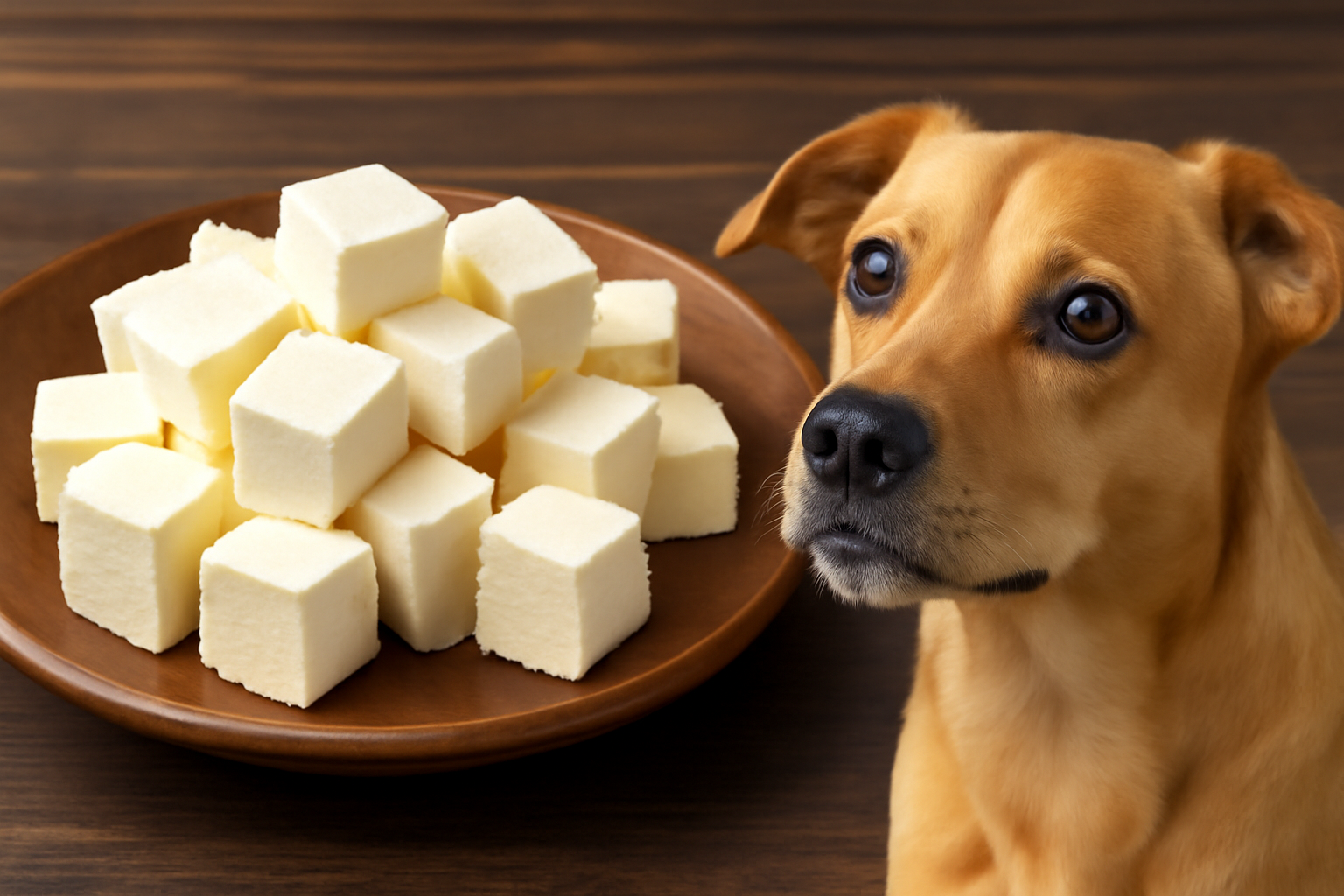Can Dogs Eat Sea Salt? 🐶🧂
As dog owners, we love to spoil our furry friends with treats and food, but we also want to make sure we’re feeding them the right things. Sometimes, we wonder if foods and ingredients that we consume regularly are safe for our dogs. One such ingredient that often comes up is sea salt. It’s used in many cooking and baking recipes, but is it safe for dogs?
Sea salt is often considered healthier than regular table salt by many people due to its mineral content and natural origins. But does that mean it’s good for our pets too? 🤔 Let’s find out whether sea salt is safe for dogs and what the risks are if they eat it. 🐕💭
What is Sea Salt? 🌊🧂
Sea salt is a type of salt that is harvested from evaporated seawater. It contains a variety of minerals, including sodium, magnesium, and potassium. Many people use sea salt in cooking because it’s less processed than regular table salt and retains more of the minerals found in seawater. The grains of sea salt are larger and coarser than regular salt, giving it a distinct texture.
Sea salt is often touted for its health benefits when used in small amounts, but is it safe for dogs? Let’s take a closer look at how sea salt affects dogs.
Why is Salt Important for Dogs? ✅
Salt, or sodium, is an essential mineral that plays a crucial role in your dog’s overall health. It helps to:
- Maintain fluid balance 💧: Sodium helps to keep the balance of fluids in the body, preventing dehydration or overhydration.
- Support nerve function 🧠: Sodium is essential for nerve transmission and muscle contraction, helping your dog move and react properly.
- Regulate blood pressure ❤️: Sodium helps regulate the amount of water in the bloodstream, which in turn affects your dog’s blood pressure.
So, while sodium is necessary for your dog’s health, it’s important that it comes from a well-balanced diet rather than from large amounts of added salt.
Can Dogs Eat Sea Salt? 🚫
While sea salt is not inherently toxic to dogs, it’s not recommended to give it to them in large amounts. The main issue with feeding dogs sea salt or any kind of salt is the risk of overconsumption. Let’s break down the risks and concerns associated with giving your dog sea salt.
1. Salt Poisoning (Sodium Ion Toxicity) ⚠️
The most dangerous risk of feeding your dog sea salt is salt poisoning or sodium ion toxicity. This happens when a dog ingests a large amount of salt, which overwhelms their system and causes a buildup of sodium in the bloodstream. Symptoms of salt poisoning in dogs include:
- Vomiting 🤢
- Diarrhea 💩
- Excessive thirst 💧
- Lethargy 😴
- Seizures ⚡
- Increased heart rate ❤️
In severe cases, salt poisoning can lead to kidney failure and death. It’s crucial to keep all salty foods, including sea salt, away from your dog to avoid this risk.
2. Dehydration 🏜️
Excessive sodium in your dog’s system can also lead to dehydration. Since salt pulls water into the bloodstream, too much salt can cause your dog to lose more fluids than they should. Signs of dehydration in dogs include:
- Dry gums and nose 🐾
- Excessive panting 😤
- Sunken eyes 👀
- Lethargy or weakness 🐕
Always ensure that your dog has plenty of fresh water to drink, especially if they’ve eaten anything salty.
3. Kidney Damage 🧑⚕️
The kidneys are responsible for filtering excess salt from the body. If your dog consumes too much salt, it can put a strain on their kidneys, especially if they already have kidney disease or other health problems. Over time, excessive salt can lead to kidney damage or even kidney failure.
4. High Blood Pressure 💔
Too much salt can also cause high blood pressure (hypertension), which can lead to heart disease or other complications. Salt should be consumed in moderation, and it’s always best to keep your dog’s diet low in added salt to support their heart and overall health.
What About Other Types of Salt? 🧂
While we’ve been talking about sea salt, it’s important to note that other types of salt, such as table salt, Himalayan salt, and rock salt, pose similar risks to dogs. They all contain sodium, which can cause the same health issues if consumed in excess.
Table Salt 🧂
Table salt is highly processed and contains additives like anti-caking agents. It is commonly used in cooking and sprinkled on food. Table salt is dangerous for dogs in large amounts and should be avoided just like sea salt.
Himalayan Salt 🏔️
Himalayan pink salt is considered a natural alternative to regular table salt and is often used as a seasoning. While it contains trace minerals, it still contains a high level of sodium and should not be given to dogs in large quantities.
Rock Salt 🧂
Rock salt is used in de-icing roads in winter and can also be harmful to dogs if ingested. If your dog eats rock salt, it can lead to the same symptoms of salt poisoning as sea salt.
Safe Amounts of Salt for Dogs 💧
Salt is necessary for a dog’s health, but it must come from their regular food. Most high-quality commercial dog foods contain the right amount of salt that your dog needs. In general, dogs need about 0.25 grams of salt per pound of body weight each day. If your dog eats a balanced diet with high-quality dog food, they are likely getting the right amount of sodium without the need for added salt.
If you’re making homemade meals for your dog, it’s important not to add extra salt. Instead, focus on providing them with fresh, whole foods like fruits, vegetables, and lean meats that provide natural nutrients without excess salt.
Nutritional Value of Sea Salt 🧂
While sea salt is not recommended for dogs, it’s still useful to understand its nutritional composition. Here’s a table showing the general nutritional content of sea salt:
| Nutrient | Amount per 1g of Sea Salt |
|---|---|
| Calories | 0 kcal |
| Sodium | 388mg |
| Magnesium | 0.1mg |
| Potassium | 0.2mg |
| Calcium | 0.1mg |
| Iodine | Varies based on source |
As you can see, sea salt contains primarily sodium, which is what we need to be cautious about when feeding it to dogs. The other minerals, while beneficial for humans, are in very small quantities and won’t provide significant nutritional value to your dog.
How to Keep Your Dog Safe from Excess Salt ⚖️
It’s important to be proactive in preventing your dog from eating too much salt. Here are some ways you can keep your dog safe:
- Avoid Giving Salty Foods 🍟
Don’t give your dog foods that are high in salt, such as chips, processed meats, or any foods seasoned with salt. Even small amounts of these foods can add up quickly and cause harm. - Read Ingredient Labels 📋
If you’re buying dog food or treats, always read the ingredient labels. Look for products that are low in sodium and don’t contain added salt. Many dog foods already contain enough sodium to meet your dog’s daily needs. - Be Cautious with Leftovers 🍔
Don’t feed your dog leftovers from your plate, especially if they contain salty ingredients. Foods like pizza, fast food, or restaurant meals can contain hidden salts that are harmful to your dog. - Provide Fresh Water 💦
Always make sure your dog has access to fresh, clean water at all times, especially if they’ve consumed any salty food. This will help prevent dehydration and flush excess salt from their system.
Safe Alternatives to Salt for Dogs 🥕🍗
If you want to give your dog some extra flavor, here are some safe and healthy alternatives to salt:
- Herbs like parsley 🌿: Fresh parsley can add flavor and also has some health benefits, including aiding digestion and promoting fresh breath.
- Unsalted broths 🍲: Use low-sodium, unsalted broth to enhance the flavor of your dog’s meals.
- Carrots and sweet potatoes 🥕🍠: These naturally sweet vegetables make great, flavorful additions to your dog’s diet.
- Coconut oil 🥥: A small amount of coconut oil adds healthy fats and flavor without salt.
Frequently Asked Questions (FAQs) ❓
1. Can dogs eat sea salt?
No, dogs should not eat sea salt or any other type of salt in large amounts. Too much salt can cause salt poisoning, dehydration, kidney damage, and other health issues.
2. What happens if my dog eats too much sea salt?
If your dog eats too much sea salt, they could experience symptoms like vomiting, diarrhea, excessive thirst, and lethargy. In severe cases, it could lead to kidney damage or even death. Contact your vet immediately if you suspect salt poisoning.
3. Is Himalayan salt safe for dogs?
Like sea salt, Himalayan salt should also be avoided in large amounts. It can still cause salt poisoning and other health problems. Use it sparingly, if at all.
4. How much salt should my dog have in their diet?
Most commercial dog foods already contain the correct amount of salt for your dog. On average, dogs need about 0.25 grams of salt per pound of body weight each day. Be cautious when adding extra salt to their food.
5. Can my dog eat salty snacks like chips?
No, salty snacks like chips, pretzels, or crackers should never be given to dogs. They contain high levels of salt and unhealthy fats, which can harm your dog’s health.
Conclusion: Should Dogs Eat Sea Salt? 🧂🐕
In conclusion, sea salt is not safe for dogs and should not be part of their regular diet. While salt is an essential nutrient for dogs, too much salt can lead to serious health issues, including salt poisoning, kidney damage, and dehydration. Always monitor your dog’s salt intake and avoid giving them salty foods.
If you want to add extra flavor to your dog’s meals, choose safe alternatives like fresh herbs, unsalted broth, or healthy vegetables. Remember, the key is moderation and always keeping your dog’s health and safety in mind. 🐶💖




